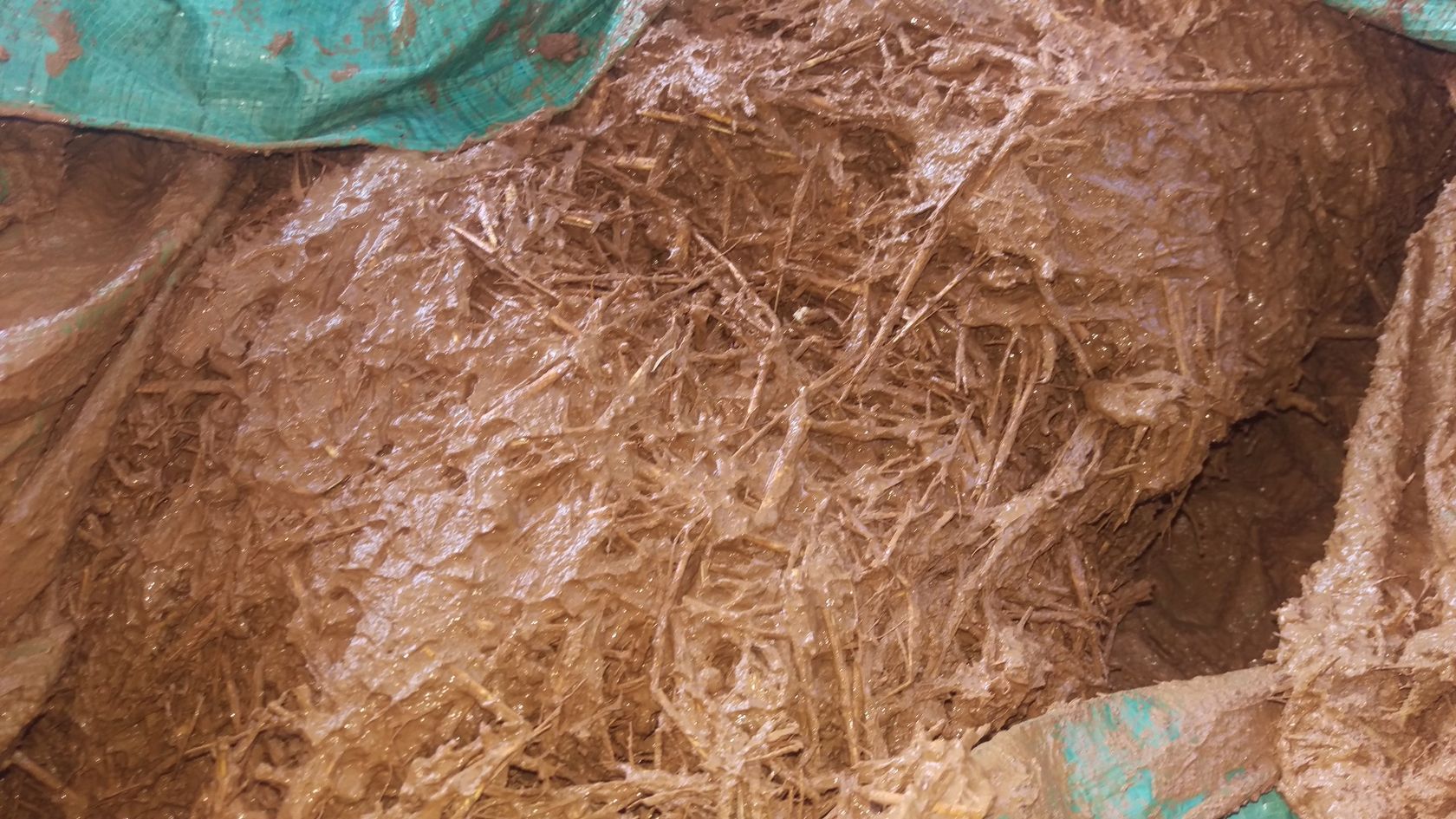Written by: Christa Holden
This sustainability topic will address cob as a building material. This is a material that has been used as a vernacular material and has been around for centuries. Seismically strong from the criss-cross of straw dried into the clay/sand, once in place, the material acts as a monolith moving with a quake. Due to the integrity of this material, when built properly and maintained it can last hundreds, if not thousands of years. When/if the structure does degrade, it simply melts back into its original state and returns to the earth leaving no harmful waste or pollution behind. Cob is a permeable material that allows the walls to breathe, allowing for good quality of indoor air as well.
Cob is a mixture of 3 parts sand, 1 part clay, a hand full straw, and water. There is a series of simple tests to judge consistency which involve handling the mixture. You can roll into a ball, toss it up and catch. If it holds without crumbling or cracking this is a good sign. Also, you can patty the mixture and pressed to your hand turn over to see how well it holds or drops. And there is a straw test where you grip with both hands a glob of mixture and pull apart to test the tensile strength of the cob and adjust the straw content as needed to achieve a strong hold. It is a very hands on material so prepare to get dirty and have fun!

The rule of thumb for cob is a knee high foundation that separates cob, a very absorbent material, from the ground and protects it from taking on ground moisture. Pumice can be used as an insulating material under floors to help hold heat in and keep it from returning to the earth. Pumice is also used in cob ovens as insulation. Depending on the climate rain protection is key. Dryer climates can leave cob exposed to elements. Re-plastering before major rains hit can help protect the structure as well.
As far as finishing goes, an alise layer is common. Alise is a paint/plaster that is a mixture of 3 part clay, 3 part mica, 1 part wheat paste (flour and water mixture), 1/2 part sand and 4 part water. The color will be dependent on the clay and any additives, like iron oxide, you use to vary the color. Also, adding more sand to the mixture will make a spackling that can be used to fill uneven surfaces and cracks.

Varying mixtures of linseed oil and turpentine can be used to seal benches or horizontal surfaces but should not be used for walls as it actually seals the material that is normally a permeable breathable material. Once sealed with oil, beeswax can be used to get a shine if desired. Due to the nature of this material, it lends itself for sculptural designs and curved walls. Renovations follow a similar sculptural approach as it can be carved out and patched up as desired and/or needed.

This is a natural material that breathes and therefore expands and contracts throughout the day. Lintels and framing for doors and windows can be set directly into the cob. The cob will dry and not harm the integrity of the wood. I can go on and on, but I suggest if you’re interested there is lots of online information and some suggested books to read are:
The Hand-Sculpted House by Michael G Smith
The Cob Builder’s Handbook by Becky Bee
*All images are from our staff members who volunteered at The Rebuilding Center last spring when the RBC updated their cob entrance.
Placecraft provides alternative construction and is located right here in our neighborhood. If you have an idea for a project and are looking for a builder, we recommend reaching out to them!










